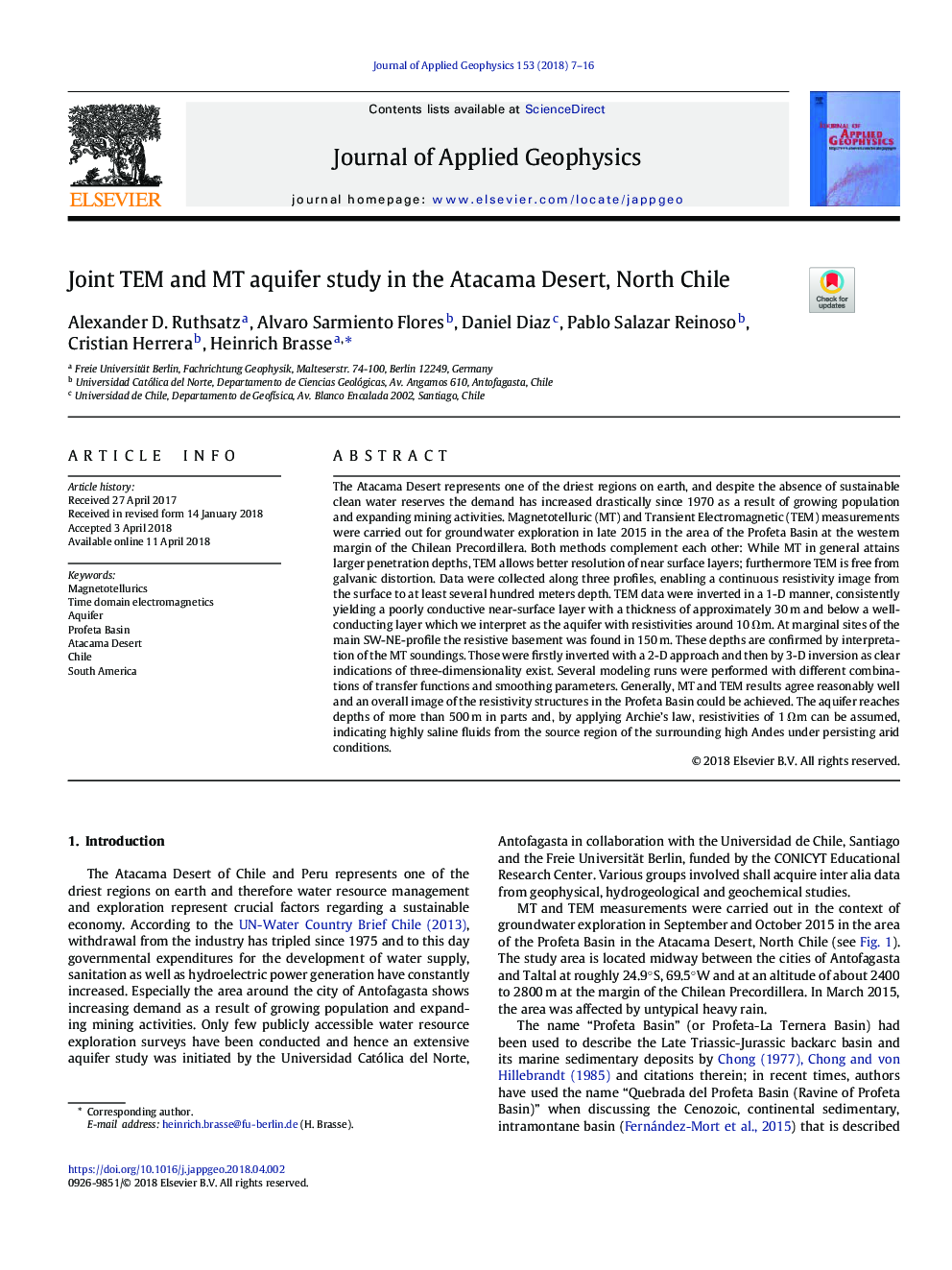| Article ID | Journal | Published Year | Pages | File Type |
|---|---|---|---|---|
| 8915382 | Journal of Applied Geophysics | 2018 | 10 Pages |
Abstract
The Atacama Desert represents one of the driest regions on earth, and despite the absence of sustainable clean water reserves the demand has increased drastically since 1970 as a result of growing population and expanding mining activities. Magnetotelluric (MT) and Transient Electromagnetic (TEM) measurements were carried out for groundwater exploration in late 2015 in the area of the Profeta Basin at the western margin of the Chilean Precordillera. Both methods complement each other: While MT in general attains larger penetration depths, TEM allows better resolution of near surface layers; furthermore TEM is free from galvanic distortion. Data were collected along three profiles, enabling a continuous resistivity image from the surface to at least several hundred meters depth. TEM data were inverted in a 1-D manner, consistently yielding a poorly conductive near-surface layer with a thickness of approximately 30â¯m and below a well-conducting layer which we interpret as the aquifer with resistivities around 10â¯Î©m. At marginal sites of the main SW-NE-profile the resistive basement was found in 150â¯m. These depths are confirmed by interpretation of the MT soundings. Those were firstly inverted with a 2-D approach and then by 3-D inversion as clear indications of three-dimensionality exist. Several modeling runs were performed with different combinations of transfer functions and smoothing parameters. Generally, MT and TEM results agree reasonably well and an overall image of the resistivity structures in the Profeta Basin could be achieved. The aquifer reaches depths of more than 500â¯m in parts and, by applying Archie's law, resistivities of 1â¯Î©m can be assumed, indicating highly saline fluids from the source region of the surrounding high Andes under persisting arid conditions.
Related Topics
Physical Sciences and Engineering
Earth and Planetary Sciences
Geophysics
Authors
Alexander D. Ruthsatz, Alvaro Sarmiento Flores, Daniel Diaz, Pablo Salazar Reinoso, Cristian Herrera, Heinrich Brasse,
